Jim Hicks' testimony to Garrison is all over the place and quite confusing.
Firstly, his real name was James (shortened to Jim) Hicks. Secondly, he lied to Garrison about where he was stood during the assassination.
Hicks' starting position during the assassination was on the corner of Elm opposite the TSBDB. As seen in Dorman film.
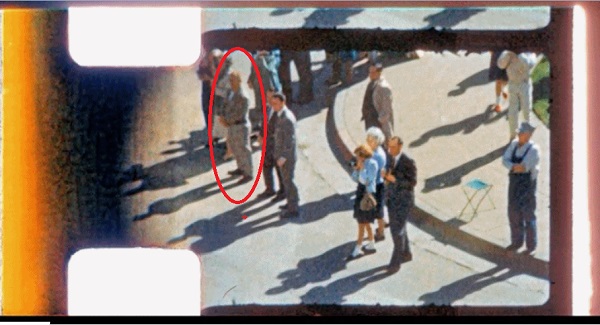
Interesting to me, Life magazine first published the Elsie Dorman film in 1967. Just three frames (neither showing Hicks) below
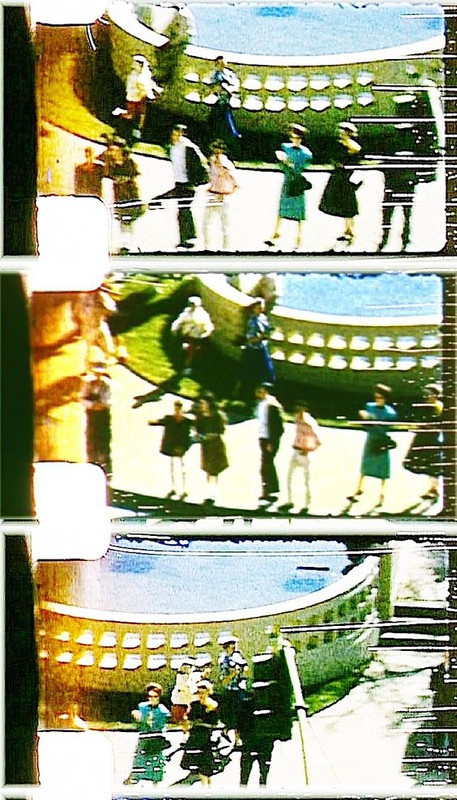
Garrison's case insider Thomas Bethell notes in his diary James [Jim] Hicks was not telling the truth. He spotted the inconsistency with which side of the road Hicks was on.
Hicks came to Garrison in sept 1967.Sept 14 1967: Earlier on, (about a month ago,) a guy called Jim Hicks had come to see Garrison in his office one Saturday afternoon. He said he had been in Dealey Plaza when JFK was shot, although I recall he had 2 versions as to which side of the street he was on. This evening Garrison told us that Hicks has a drunken driving rap hanging over his head. He now wants us to write to the D.A. in Oklahoma to get him off. This is obviously the explanation of Hicks' visit.
Seems to me Hicks was either put up to going to Garrison with his statement because the Dorman film was being released and it
might eventually identify him being on the corner of Elm. Or, Hicks got scared and went about trying to come clean, of sorts, to Garrison. But just told a pack of lies to confuse Garrison by using Karan Hicks' testimony to the WC as his own.
If you look at Karan Hicks' statement used as testimony in WC she is strangely named as ''Mrs. James Daniel [Karan] Hicks. She is using James (Jim) Hicks name, weird?? I've not found James (Jim) Hicks details but it would be interesting to know his real middle name. Probably Daniel.
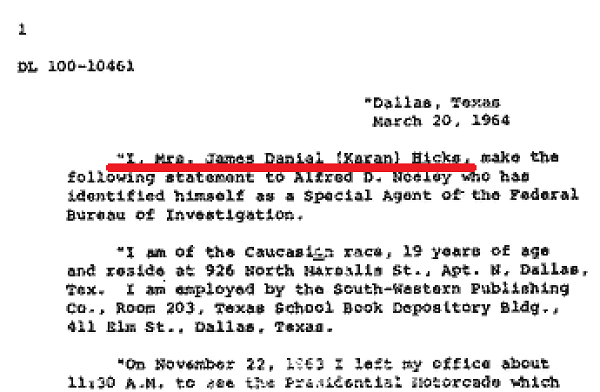
What interests me is that Fletcher Prouty seemed to identify Hicks as being involved. Prouty seemed certain of his role, as communications guy, which makes me think Prouty knew Jim Hicks. Prouty never ever fully revealing Hicks' cover.
Either way Hicks walked down Elm towards the overpass. As seen in Skaggs 6 and Willis 7. Hicks told Garrison he ran down towards the underpass. He doesn't appear to be running. Not at all.

Hicks talks to Garrison as though he was standing on the North side of Elm. Near to the Stemmons sign. (Which is where Karan Hicks testified to Warren Commission that she stood!)
From Hicks' testimony to Garrison appearing before the Orleans Parish Grand Jury on January 11, 1968
Q. How many different areas did you hear shots coming
from?
A. At least two.
Q. At least two you mean besides the direction of the Depository?
A.Like I say, I don't know about this up here, I didn't hear any shots come from up there, the ones I heard
came from here and here (pointing) -- Pointing to knoll
JUROR:
Q. You saw the President when he fell?
A. Yes.
Q. You were that close? About how far?
A. Approximately in here. I would say about 50 feet at the most.
The corner of Elm where Jim Hicks was positioned is
roughly 60m/190ft + from where the headshot happened
In this article Dallas [possibly Morning] Herald, dated 07.29.1969 Hicks stated ''a shot came over his head from the grassy knoll''
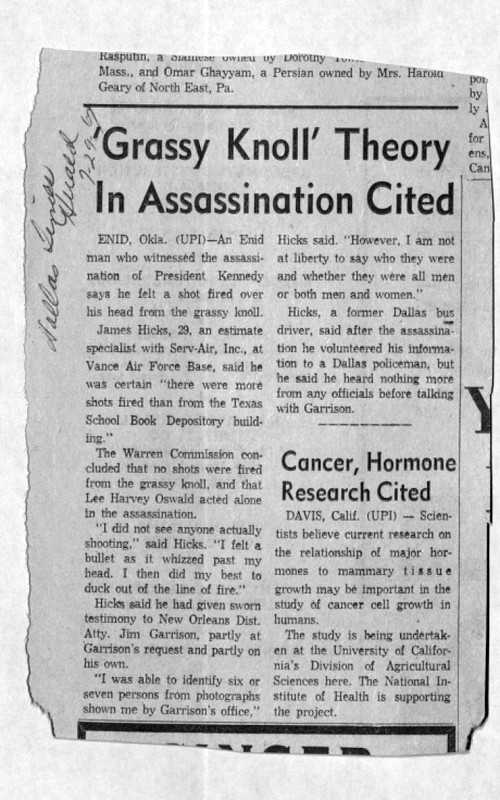
Going back to whether Hicks was volunteering his information to Garrison or was put up to it. When you take into account the event the night before Hicks gave his statement to Garrison two men broke into his hotel room and physically attacked him, attempting to throw him from the 6th floor window ... I conclude -- Hicks went rogue.
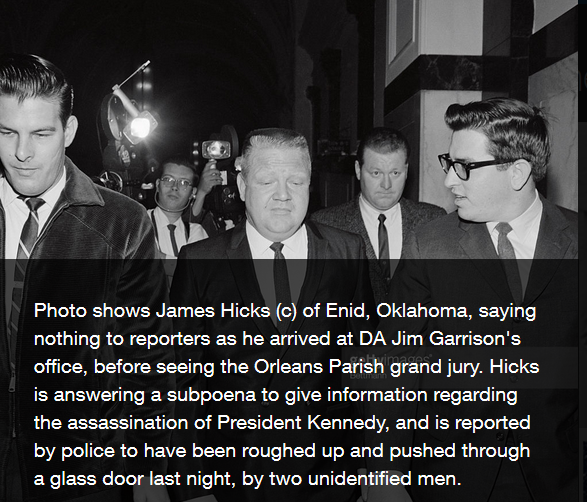
MR. GARRISON : Jim, a few minutes ago you said you were extremely
nervous and I thought I would point out at the outset
that I am not going to try and trap you in any way
and neither are the Grand Jury, they are just interested
in having the benefit of what you remember. You were
at Dealy Plaza when the assassination occurred and none
of us were. You are not a target of the office in any
sense and we are interested in having the benefit of
your recollections. So if you relax and tell us when
you arrived on the scene, what you saw, and everything
you can remember, and what I am going to do is turn you
loose so you can tell it in a narrative way rather
than ask you a lot of questions. Tell us of when you
first arrived there, when you first noticed things
happening, et cetera. Just tell us about it.
And it's been alleged that Hicks was 'treated' at a mental hospital not long after giving his testimony to Garrison. He was supposedly released in 1988, dying shortly after.
Hicks was from Enid, Oklahoma. Another name sometimes mentioned in the assassination of JFK is Loy Factor, from Tishomingo, Oklahoma. Just 215 miles apart.